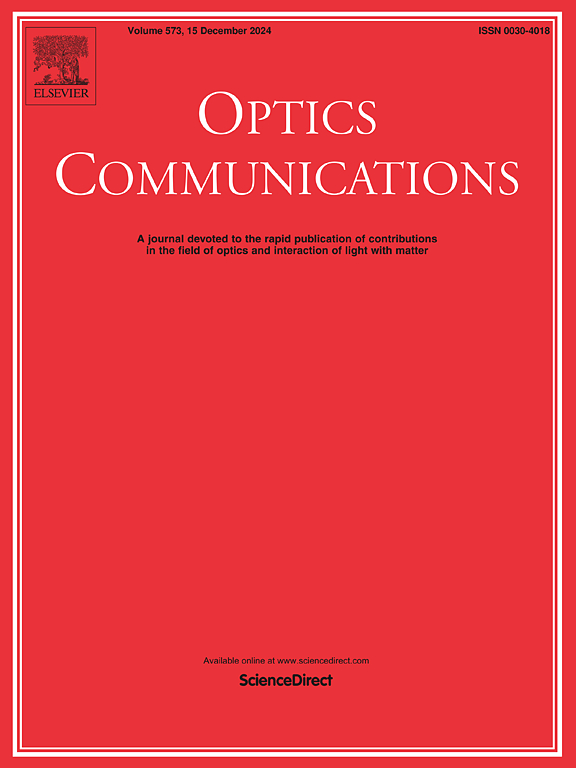The enhancement of high-order-harmonic generation in two-color laser field in fibonacci quasicrystals
IF 2.5
3区 物理与天体物理
Q2 OPTICS
引用次数: 0
Abstract
High-order harmonic generation (HHG) from the Fibonacci quasicrystal system is investigated by solving the time-dependent Schrödinger equation (TDSE). The Fibonacci quasicrystal (FQ) has a fractal structure and appears many intersections on the band structure, which may provide more possible channels for HHG than that from crystals. Our simulation shows that the electron ionization is weaker for the top valence band (VB) states than that for the states from fractal energy bands in the middle of valence bands for a two-color field scheme. This is very different for electron excitation from the one-color scheme in Fibonacci quasicrystals or crystals. Compared with the one-color field scheme, the intensity of HHG is enhanced by orders in the case of the two-color field scheme. HHG from crystals could also be enhanced by two-color scheme, but the enhancement of the electron excitation usually comes from the states near the top of VB or resonance excitation channels. The fractal bands in FQ not only increase the ionization channels but also promote the generation of backscattering, thereby enhancing the electron distribution on the conduction band. Time-dependent population imaging (TDPI) is simulated to describe the microscopic dynamics of electrons and multiple channels from the intersection of fractal bands are proposed to explain the physical mechanism. The fractal band structure provides more sources of interference paths and may provide more information in harmonic spectra from the quasicrystal system for further investigation.
双色激光场对斐波那契准晶体高次谐波产生的增强
通过求解时间相关Schrödinger方程(TDSE),研究了斐波那契准晶体系统的高次谐波产生。Fibonacci准晶体(FQ)具有分形结构,在带结构上出现许多交叉点,这可能为HHG提供比晶体更多的可能通道。我们的模拟表明,在双色场方案中,顶价带(VB)态的电子电离弱于价带中间分形能带态的电子电离。对于电子激发,这与斐波那契准晶体或晶体中的单色方案非常不同。与单色场方案相比,双色场方案的HHG强度提高了3 ~ 4个数量级。双色方案也可以增强晶体中的HHG,但电子激发的增强通常来自VB或共振激发通道顶部附近的状态。FQ中的分形带不仅增加了电离通道,而且促进了后向散射的产生,从而增强了导带上的电子分布。模拟了时间依赖种群成像(TDPI)来描述电子的微观动力学,并提出了分形带相交的多通道来解释物理机制。分形带结构提供了更多的干涉路径来源,可以为准晶体系统谐波谱的进一步研究提供更多的信息。
本文章由计算机程序翻译,如有差异,请以英文原文为准。
求助全文
约1分钟内获得全文
求助全文
来源期刊

Optics Communications
物理-光学
CiteScore
5.10
自引率
8.30%
发文量
681
审稿时长
38 days
期刊介绍:
Optics Communications invites original and timely contributions containing new results in various fields of optics and photonics. The journal considers theoretical and experimental research in areas ranging from the fundamental properties of light to technological applications. Topics covered include classical and quantum optics, optical physics and light-matter interactions, lasers, imaging, guided-wave optics and optical information processing. Manuscripts should offer clear evidence of novelty and significance. Papers concentrating on mathematical and computational issues, with limited connection to optics, are not suitable for publication in the Journal. Similarly, small technical advances, or papers concerned only with engineering applications or issues of materials science fall outside the journal scope.
 求助内容:
求助内容: 应助结果提醒方式:
应助结果提醒方式:


